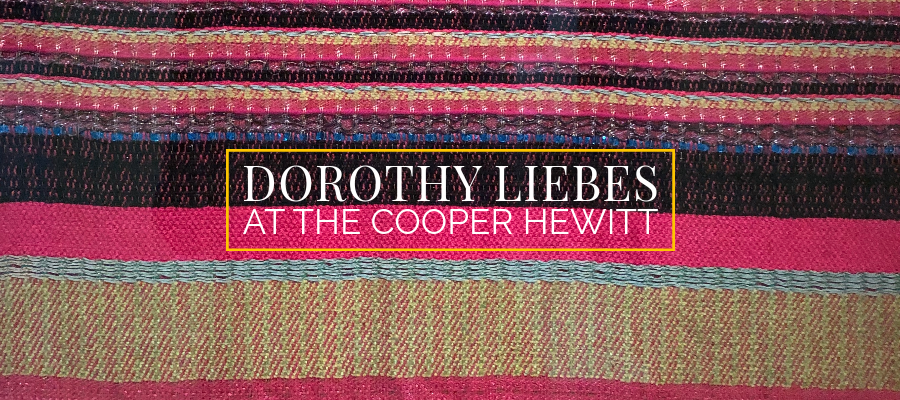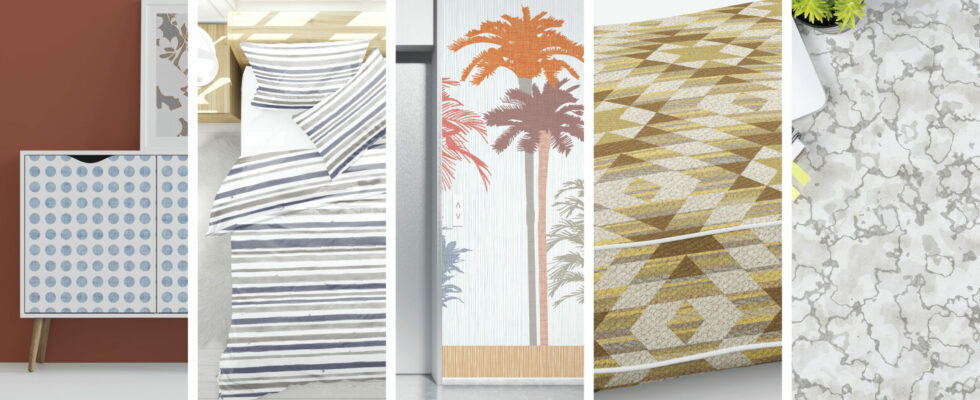
Common Pattern Repeats, Learn the Basics
Computer software may make it easy to take a motif and tile it out, but that doesn’t mean that a pattern has been designed in a pattern repeat. In fact, a skilled pattern designer can spot a design that has just been tiled out and not designed in a pattern repeat from a mile away. Ok, maybe not a mile, but definitely from a few steps behind someone on the sidewalk walking with a dress printed with a horrible repeat.

How can pattern designers spot it? It hurts our eyes. Well, and also it stripes. It’s true, focus on the design as a whole, maybe squint your eyes a little, and you can spot the box around which the design had been made. Once you see those stripes, you can’t see anything else.
Pattern designers such as the ones who design for us at Design Pool have been trained in the skills needed to create designs that are intended to be repeating. And not all repeats are the same. A skilled designer is designing for the type of repeat they want to use for the pattern they are designing. For example, an ogee design may require something different from plaid. Yes, there are more than one or two types of repeats.
So what are the different types of repeats? Here are seven of the most common pattern repeats.
Straight Repeat
This is the most basic layout where the motif repeats out directly in a horizontal line to the left or right, or the original motif.
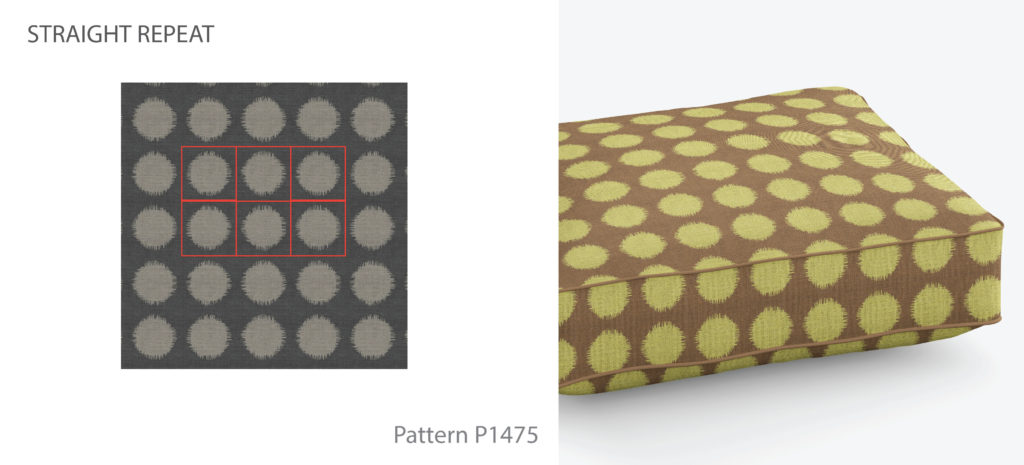
Half Drop
This layout occurs when a motif is repeated again, but halfway down vertically or horizontally from the original motif.
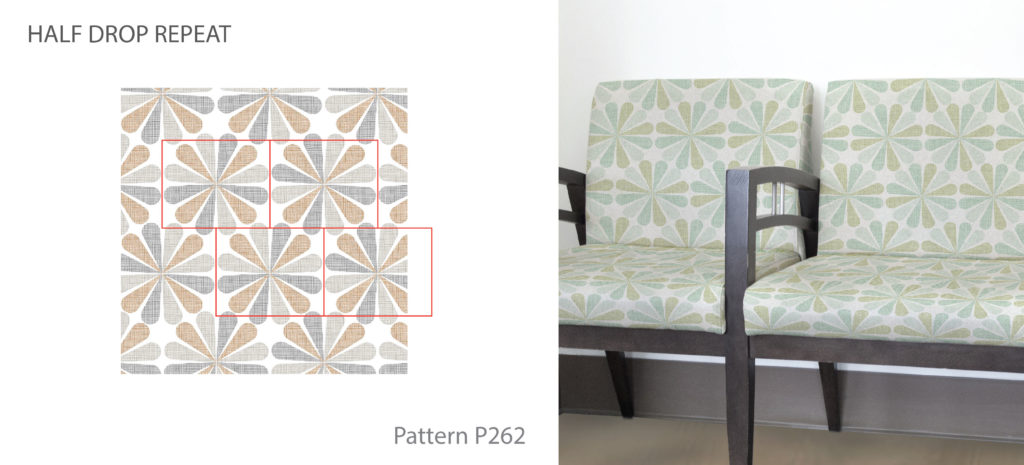
Allover Pattern
An allover pattern doesn’t appear to have any direction to it. The motifs, design elements and colors are evenly distributed through the whole pattern. The repeat may be straight or half dropped, but it should appear seamless. These types of designs can be cut easily and used on furniture or garments without having to be engineered.
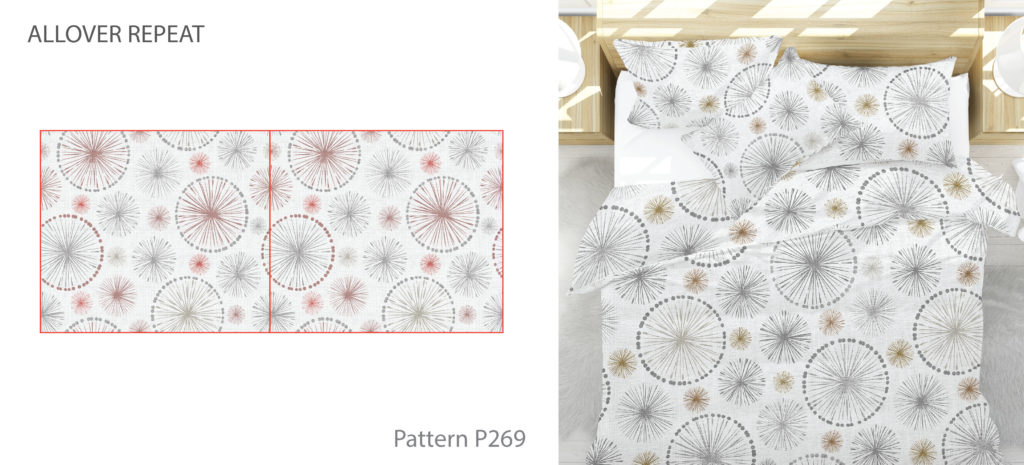
Directional Pattern
Directional patterns are patterns that have a definite direction to them. Motifs are organized with a particular direction, and the overall design has a definite top and a bottom, such as a landscape pattern or a damask. This type of design only looks correct in one direction and items made from these patterns need to be engineered with that direction in mind.
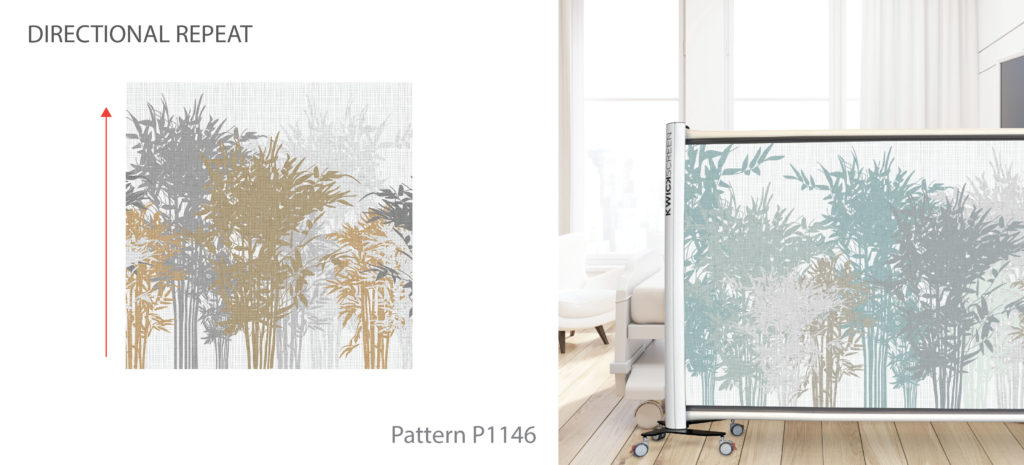
Irregular Repeat
Sometimes referred to as a free drop, these types of repeats are similar in principle to a half drop but don’t always repeat using the same fraction of a repeat size each time.
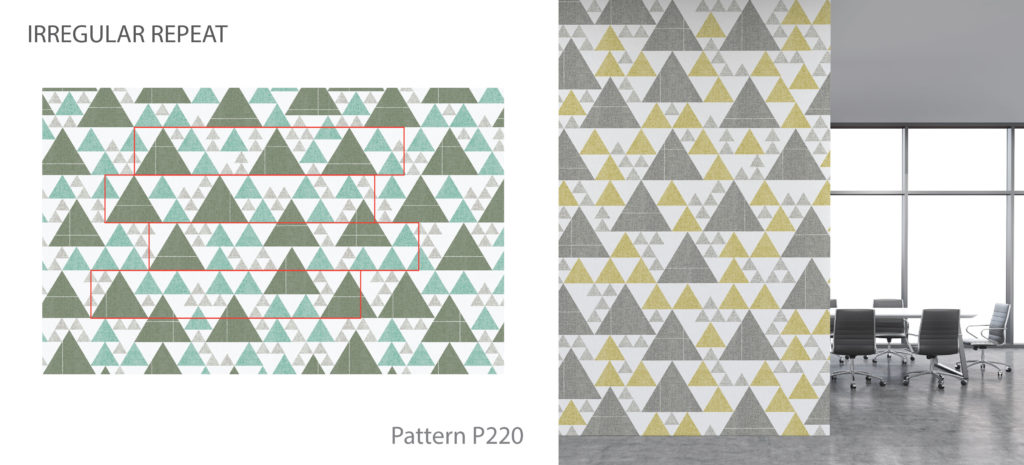
Mirrored Pattern
These types of designs have a point from which a design is mirrored, often seen in stripe or plaid patterns.
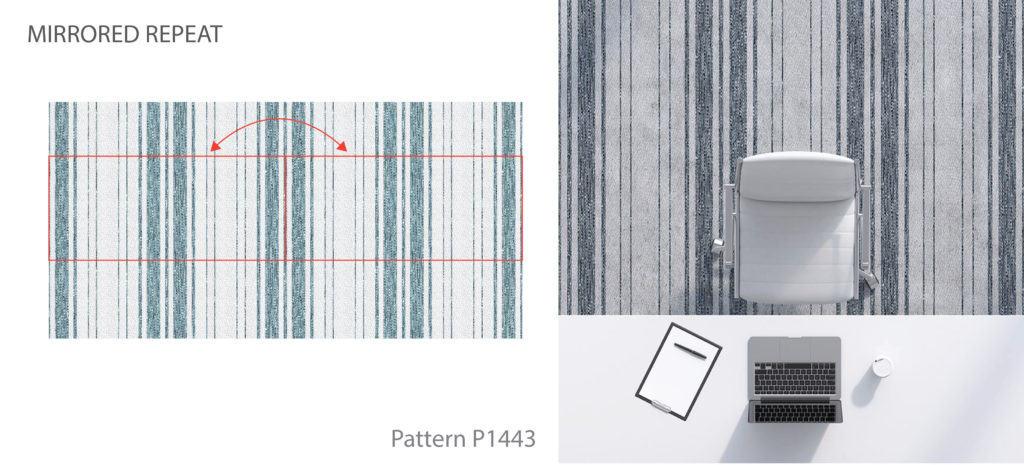
Unbalanced Pattern
Unlike a mirrored pattern, an unbalanced pattern is a stripe layout that is not mirrored but rather irregular or seemingly random.
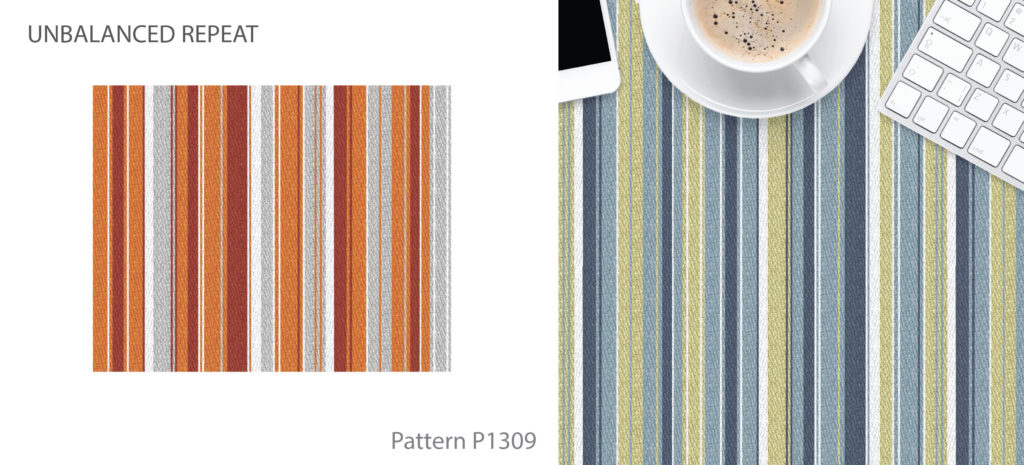
Can you spot the different types of repeats and layouts in our designs? Quiz yourself while you scroll through our collection of licensable patterns. And don’t blame us the next time you see a cheaply done repeat out in the wild. Consider yourself warned, your eyes will hurt!
Share this post
Author
DESIGN/COLOR TRENDS AND AWESOME INFORMATION IN YOUR INBOX
Sign up for our monthly trend letter





